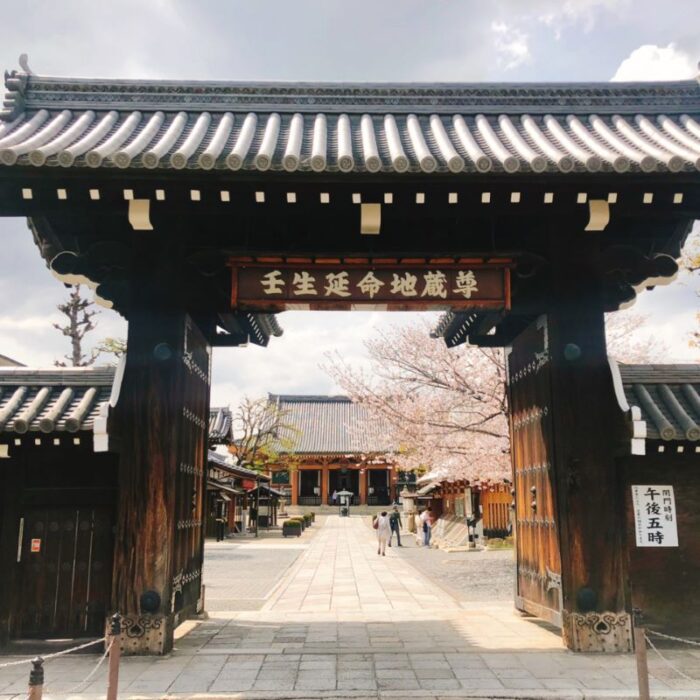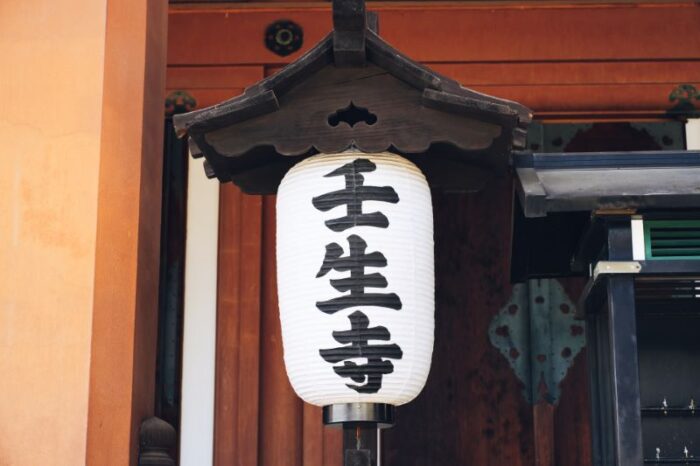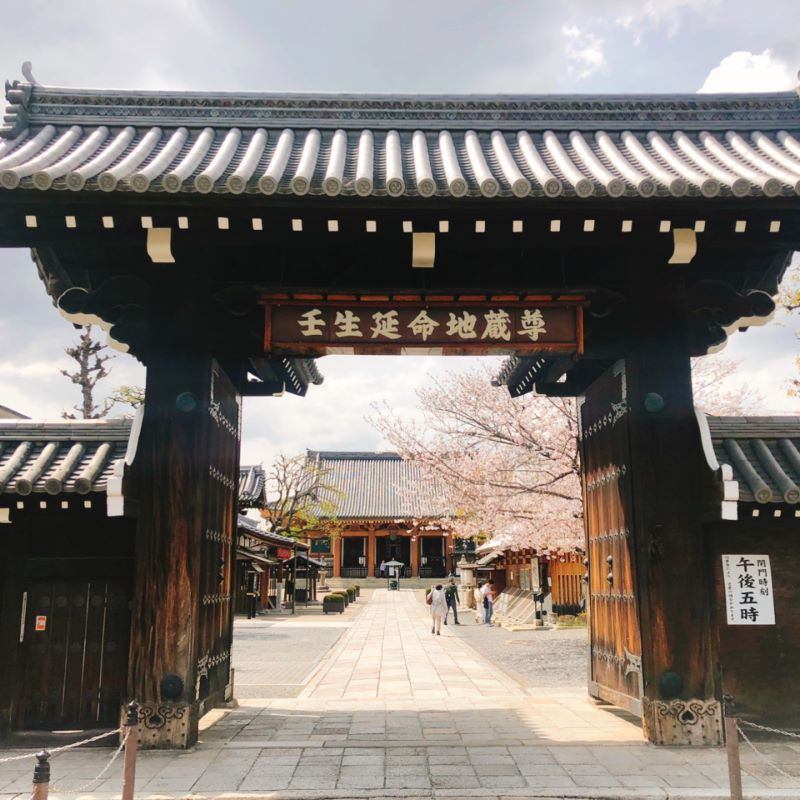The Setsubun Yakuyoke Ceremony, a revered tradition at Mibu-Dera Temple in Kyoto, Japan, has been captivating locals and visitors for over nine centuries. Rooted in Japanese values and beliefs, this festival is a powerful prayer for good health and protection from misfortune.

At Mibu-Dera Temple, attendees can witness unique practices like Kyogen performances and a bean-throwing ceremony, showcasing virtues of diligence and resilience.
From February 2nd to 4th, this enchanting event offers a glimpse into the rich cultural heritage of Kyoto.
Key Takeaways
- Setsubun Yakuyoke Ceremony is a respected tradition at Mibu-Dera Temple.
- The ceremony reflects Japanese values and beliefs, focusing on praying for good health and warding off misfortune.
- The bean-throwing ritual emphasizes positive aspects such as hard work and devotion, and symbolizes the evacuation of evil spirits from people’s lives.
- Mibu-Dera Temple is a hub for celebrating Setsubun and is associated with Shinsengumi and Bakumatsu.
The History of Setsubun Yakuyoke Ceremony

The yakuyoke ceremony, a respected tradition at Mibu-Dera Temple, has a rich history in the Setsubun Festival. Dating back over 900 years, this ceremony was initiated by Emperor Shirakawa and holds great significance in Japanese culture.
It is believed that by participating in this ritual, one can ward off misfortune and pray for good health. The yakuyoke ceremony is a unique practice that highlights the values of diligence, devotion, and resilience.
Taking place from February 2nd to 4th, it is a fascinating event in Kyoto, drawing hundreds of visitors despite the winter conditions. This tradition is deeply rooted in the history of Mibu-Dera Temple and has become a hub for celebrating Setsubun, along with Yoshida Shrine.
The yakuyoke ceremony continues to be a cherished and important aspect of the Setsubun Festival, symbolizing the desire to protect oneself and overcome challenges.
Significance of Setsubun Festival at Mibu-Dera Temple
Celebrating for over 900 years, the Setsubun Festival at Mibu-Dera Temple reflects Japanese values and beliefs, emphasizing virtues such as hard work and devotion. This vibrant festival holds great significance for the Japanese people, as it is a time to pray for good health and ward off misfortune.
Here are four aspects that make the Setsubun Festival at Mibu-Dera Temple truly special:
- Traditional Practices: The festival features Kyogen performances, a form of comedic theater, adding a lively and entertaining element.
- Bean-Throwing Ceremony: Participants throw roasted soybeans to drive away evil spirits and invite good luck.
- Symbolic Rituals: The breaking of Houraku plates symbolizes the expulsion of evil spirits from people’s lives, fostering positive aspects like hard work and devotion.
- Cultural Hub: Mibu-Dera Temple, associated with the historic Shinsengumi and Bakumatsu, is one of the two renowned venues for Setsubun festivities in Kyoto, attracting hundreds of visitors despite the winter conditions.
The Setsubun Festival at Mibu-Dera Temple is a fascinating and culturally rich event that showcases the essence of Japanese traditions and beliefs.
Unique Practices and Performances at Mibu-Dera Temple
Performing Kyogen and engaging in the bean-throwing ritual, Mibu-Dera Temple’s Setsubun Festival highlights the values of diligence, devotion, and resilience.
The festival, which takes place from February 2nd to 4th, showcases unique practices and performances that captivate visitors. The Kyogen performances, traditional comedic plays, add a touch of humor and entertainment to the event.
The bean-throwing ceremony, a central part of Setsubun, symbolizes the expulsion of evil spirits and the invitation of good luck. This ritual emphasizes positive aspects such as hard work and devotion, encouraging participants to view misfortunes as challenges rather than ill-fate.
The smashing of Houraku plates further symbolizes the departure of evil spirits from people’s lives.
Mibu-Dera Temple’s Setsubun Festival is a cherished tradition that brings together locals and travelers alike to celebrate the values of resilience and spiritual cleansing.
Dates and Schedule of Setsubun Festival at Mibu-Dera Temple
Taking place from February 2nd to 4th, the Setsubun Festival at Mibu-Dera Temple offers a rich schedule of events and activities for visitors to enjoy. This fascinating Kyoto event is steeped in tradition and vibrant rituals.
The festival features unique practices and performances that highlight diligence, devotion, and resilience. One of the main attractions is the bean-throwing ceremony, where misfortunes are seen as challenges rather than ill-fate. To symbolize the departure of evil spirits, houraku plates are smashed, and Mibu Kyogen performances are held in April.
Plus, visitors can enjoy free zenzai, a traditional Japanese sweet, served to the first 1,000 attendees. The Setsubun Festival at Mibu-Dera Temple is an enchanting experience that offers a fascinating insight into Japanese culture and customs.
Symbolism and Rituals of the Bean-Throwing Ceremony
The bean-throwing ceremony at Mibu-Dera Temple emphasizes virtues like hard work and devotion, and encourages individuals to see misfortunes as challenges rather than ill-fate. This ancient ritual holds deep symbolism and rituals that captivate and inspire.
- The act of throwing beans symbolizes the expulsion of evil spirits from one’s life.
- Smashing the Houraku plates represents the departure of negative energy.
- The Mibu Kyogen performances in April portray the triumph of good over evil.
- The evacuation of evil spirits from people’s lives allows for positivity and growth.
These customs not only provide a sense of spiritual cleansing, but also serve as a reminder to approach life’s obstacles with resilience and a positive mindset.
The bean-throwing ceremony at Mibu-Dera Temple is a powerful and transformative experience that instills hope and encourages personal growth.
The Honorific Kito Ceremony at Mibu-Dera Temple
Participants of the Honorific Kito Ceremony at Mibu-Dera Temple can purchase rare amulets shaped as Dharma or Jizo to protect themselves from calamities or hardship. These amulets hold rich symbolic meanings and are believed to provide spiritual protection.
The Honorific Kito Ceremony is a special prayer session held at the temple’s main hall, where participants come to drive away evil spirits and seek blessings for good fortune. The ceremony is a solemn and revered tradition that reflects the deep spiritual beliefs of the Japanese people.
Free Zanzai: A Sweet Treat at Mibu-Dera Temple
Visitors to Mibu-Dera Temple during the Setsubun Festival can enjoy the novel appeal of free zanzai, a traditional Japanese sweet served to the first 1,000 attendees. This delightful treat adds a touch of sweetness to the already vibrant festivities.
As attendees indulge in the zanzai, they can feel a sense of connection to the rich cultural heritage of Japan. The sweet, made from azuki beans and served warm, provides a comforting and nostalgic taste that transports one to simpler times. It is a small gesture that showcases the generosity and hospitality of the temple.
The experience of enjoying this free zanzai amidst the lively atmosphere of the festival creates lasting memories and a deeper appreciation for Japanese traditions.
Frequently Asked Questions
What Is the Origin of the Setsubun Yakuyoke Ceremony at Mibu-Dera Temple?
The origin of the Setsubun Yakuyoke ceremony at Mibu-Dera Temple dates back to ancient times. This revered tradition is deeply rooted in Japanese culture and beliefs, symbolizing the purification and protection from misfortune.
How Does the Setsubun Festival at Mibu-Dera Temple Reflect Japanese Values and Beliefs?
The Setsubun Festival at Mibu-Dera Temple reflects Japanese values and beliefs by emphasizing virtues like hard work and devotion. Misfortunes are seen as challenges, not ill-fate, and the ritual symbolizes the evacuation of evil spirits from people’s lives.
Are There Any Other Unique Practices or Performances at Mibu-Dera Temple During the Setsubun Festival?
During the Setsubun Festival at Mibu-Dera Temple, there are several unique practices and performances. These include Kyogen performances, the bean-throwing ceremony, and the smashing of Houraku plates to symbolize the evacuation of evil spirits.
What Are the Specific Dates and Schedule of the Setsubun Festival at Mibu-Dera Temple?
The specific dates and schedule of the Setsubun Festival at Mibu-Dera Temple are not mentioned in the context.
What Are the Symbolic Meanings and Rituals Associated With the Bean-Throwing Ceremony?
The bean-throwing ceremony at Mibu-Dera Temple holds symbolic meanings and rituals. It emphasizes virtues like hard work and resilience, and evil spirits are believed to leave as Houraku plates are smashed.
The Sum Up
To sum it up, the Setsubun Yakuyoke Ceremony at Mibu-Dera Temple is a cherished tradition that holds deep cultural significance in Kyoto, Japan. This ancient festival, celebrated for over 900 years, is a testament to the resilience and devotion of the Japanese people.
The unique practices, such as the bean-throwing ceremony and Kyogen performances, showcase virtues like diligence and perseverance. Whether it’s participating in the honorific Kito Ceremony or indulging in the traditional sweet treat of Zenzai, visitors to Mibu-Dera Temple are guaranteed a fascinating and spiritually uplifting experience.




